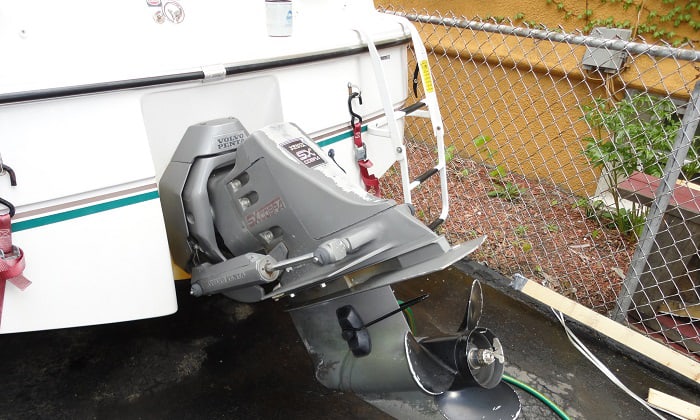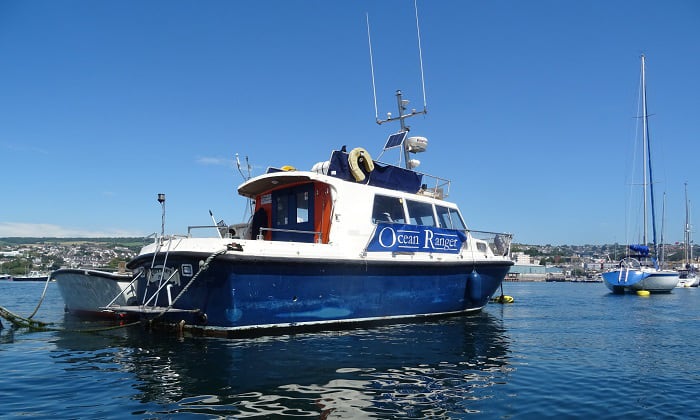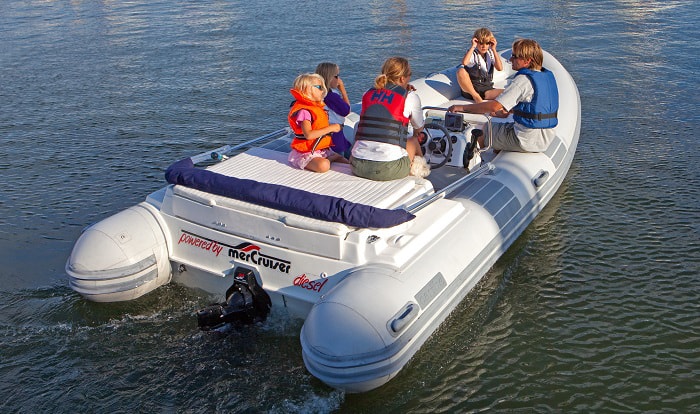In the sterndrive vs inboard matchup, sterndrives win by a nose because of four main things: they’re more fuel-efficient at higher speeds, guarantee smoother rides, especially when trimmed up, provide better overall control, and leave plenty of onboard space. Inboards are far easier to maintain, though, and their propellers and engines are generally positioned safer underneath and within the vessel, respectively.
If you want a more detailed explanation of why we’ve come to this conclusion, the cons that hold these two engine types back, and every difference between sterndrive and inboard propulsion systems, then please continue reading.
Table of Contents
Why Plenty Of Pro Sailors Love Sterndrive Engines
The average sterndrives definition highlights the inboard motor and outboard drive system that these types of engines use to propel the boat. The engine is typically housed under the stern, which arguably is more noise-canceling than an inboard whose location is in the center wheelhouse (although that may not always be the case in all vessels).
Few things impart more fun in the sailing experience than sterndrives (also called I/Os or outdrives). Just think about it, they were designed with more speed for planing boats in mind.
I admit that outboards provide the most control and versatility when trimming your vessel, but it’s not like outdrives don’t give you the ability to trim your boat down enough for it to safely navigate shallow water.
We can’t deny that boats with outdrives attract more boaters who prefer sportier-looking vessels. Most boats with I/O engines can also accommodate bigger cabins and more space at the stern.
As for the matter of enhanced fuel efficiency, do keep in mind that this advantage only applies when the vessel is at speed. You get to trim and raise your bow, after all, which reduces resistance. Overall, there’s way better control with outdrives – the same perk provided by outboards.
Another point that delivers a heavy blow to both inboard and outboard engines is that, nowadays, boat manufacturers are following a trend involving connecting two props to a single engine. This ups the speed every time the boat is on plane.
Inboards Aren’t Exactly Pushovers, Either
Now, if you think the points I mentioned above are enough for sterndrives to deliver the knockout blow to inboards, think again. Sterndrives are quick to rebut inboards and counter the latter’s safer, free-from-the-elements engine perk. This is precisely why sterndrive motors tend to last just as long as inboards.
However, inboard engine manufacturers haven’t thrown in the towel for years and are unlikely to do so anytime soon because inboards have more than one unique advantage.
The inboard vs sterndrive debate continues to rage because the former refuses to back down with its own mix of perks:
- You can’t settle for anything less than an inboard engine for larger vessels spanning 40 feet or more. I can say the same for 30-foot displacement boats in which sterndrives simply have no place because their hulls are an antithesis of how the said engines are designed. In these vessels, the benefits of sterndrives are watered down, if not completely erased.
- You get better water sports performance from inboard engines. They’re preferred by most water sports enthusiasts and surfers for this reason.
- The location of the prop underneath the boat doesn’t make it a ready hazard to nearby swimmers, unlike in sterndrives and some outboard systems.
Comparing The Downsides
Sterndrive and inboard engines are the subjects of passionate arguments among sailors because either group is quick to point out the following disadvantages of each one.
- Inboards generally have limited reverse options. In I/Os and outboards, you have more control on the rudder and the direction to take when reversing your vessel, but in inboards, it’s fairly limited, and you have to be constantly in gear to change the direction.
- Both are quite hard to maintain because their encased engine and some parts are hard to reach. However, just ask most experienced sailors, and they’ll definitely say that sterndrives are more difficult to maintain, both technically and financially.
- In sterndrives, corrosion of the propeller and drive system remains a long-term problem. This is why you can’t keep sterndrive-driven vessels in the water too long, especially if it’s in the ocean or anywhere with Even so, it’s easier to address any fouling problem with the prop since you can raise it with the press of a button.
- In super shallow lakes and rivers, you want to refrain from using sterndrives, especially if you can’t trim them up enough to prevent the prop or drive system from hitting rocks and debris. The same goes for inboards since you can’t trim vessels that use them.
It All Comes Down To What You’re Used To Sailing
Any one of the three main types of boat propulsion and engine systems would have gone the way of the dodo years if they didn’t offer something unique for every sailor. Needless to say, it’s best to stick to the one you’re already familiar and comfortable with. Of course, this is dictated by the size and type of boat you’re using.
- If you own a 30-foot cabin cruiser with an inboard engine, then you have to master using that type of engine since you’re essentially cut off from outboards and outdrives.
- Sterndrives provide a relatively different driving experience than outboards and inboards. You better be prepared to invest time in learning how to use them if you’ve been using one of the other two options.
Conclusion
The sterndrive vs inboard battle for the top spot leans slightly in favor of the former because it has more compelling advantages for both casual and experienced sailors. Still, we can’t deny why water sports lovers can’t get enough of inboard engines and why larger boats and ships settle for only these engine types. In the end, this debate won’t really matter if you already have a favorite type of engine and stick to it.

“My intention from the first day establishing Boating Basics Online is to provide as much help as possible for boaters who want to experience a first safe and convenient trip. So feel free to join us and share your beautiful journeys to the sea!”



